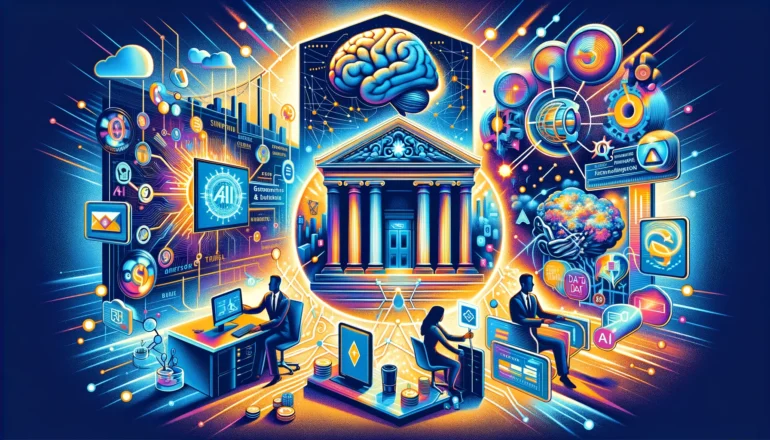Nearly every industry is enamored with generative AI, and fintech is one of the key sectors leading the charge in its adoption. Financial firms can combine generative AI with more established traditional AI capabilities to accelerate an organization’s transformation efforts in a number of key areas, including predictive decision-making, risk assessments, customer engagement, cybersecurity, compliance and more. Yet while generative AI offers great potential, fintech organizations must be strategic in how and where they apply generative AI’s large language models (LLMs) and related technologies in the enterprise.
Four Key Trends
Every organization’s transformation journey will be unique in exactly how and where AI is applied to streamline processes, automate workflows and generate cost savings. That said, here are four key trends that are shaping the AI adoption journey for many firms today:
1. Mixing generative and traditional AI: It’s hard to overstate the excitement around generative AI in an era where ChatGPT, the most well-known generative AI application, quickly set the record for the fastest growing user base in history. But this exuberance can obscure the fact that generative AI must often work in tandem with traditional AI to create the most value. For instance, a bank could use traditional AI to analyze user behavior data and then use the outputs as a basis for generative AI to create personalized content. Or an AIOps platform could incorporate generative AI to customize security alerts and facilitate SOC correspondence. Blending these different types of AI can pay huge dividends for financial firms that contend with sensitive data and strict regulations.
2. More data flexibility and fewer silos: AI has captured the attention of financial services leaders, but it’s easy to forget that AI is nothing in the absence of good data. Without adequate flexibility and access that transcends traditional silos between datasets or vendor ecosystems, the information sources and algorithmic modeling that power generative AI will be limited. A solid data management strategy is the first step to ensure consistent standards for metadata, definitions and data attributes across the IT estate. This must be backed up by the right underlying data architecture, ideally one that accesses data where it resides through a virtualization layer or similar technique that connects all data freely across the enterprise and third-party networks.
3. Embracing private AI: Especially when paired with traditional AI, generative AI delivers more insights and value to the organization than ever before. The caveat is that these insights and value can easily make their way to other companies, even competitors, in an AI ecosystem heavily reliant on third party relationships and vendors. That’s why Private AI solutions will become increasingly important to fintech firms that want to leverage the power of AI without compromising data privacy by inadvertently sharing modeling and algorithm training. Private AI enables firms to train securely on company data, with the resulting models never shared beyond the organization.
4. Remembering the people factor in AI adoption: Putting AI capabilities into action requires addressing the people factor. The overarching goal is to make sure the technological complexities that power AI don’t become a barrier to entry for financial risk managers, investment analysts or other business users who shouldn’t need a PhD in data science to do their jobs. Success involves a two-part recipe of providing accessible platforms that allow for control and customization of AI processes without the need for advanced coding; and then adequate training for users to manage these platforms. The latter should include guidance on search and prompt engineering for better results.
Blending AI Innovation with Risk Management for Maximum ROI
The above trends are defining the AI adoption curve today for financial institutions as they seek maximum ROI from new AI-driven efficiencies. The caveat is that, along with the new capabilities must come a substantial risk management effort to ensure security or compliance vulnerabilities aren’t inadvertently created when standing up new AI systems.
While they can dramatically scale operations and transform processes, generative AI platforms that rely on LLMs have been known to introduce AI hallucinations and internet misinformation into their work product. And even traditional AI can magnify risk – including whenever new data streams are accessed without proper authentication safeguards, or in cases where automation is applied to flawed processes, thereby scaling possible instances of non-compliance whenever that automated process takes place. Transformation teams should follow the NIST AI Risk Management Framework to help guide the design, development, use and evaluation of AI products, services and systems.
The stakes for deploying AI effectively and securely in the fintech organization are particularly high in a sector that deals with extremely sensitive PII and financial transactions. The good news is that the payoff for success is also especially high. That’s because given that generative AI’s time-saving capabilities are reducing manual workloads and improving productivity in a sector where salaries tend to be higher, every hour saved magnifies the ROI compared to other industries.


